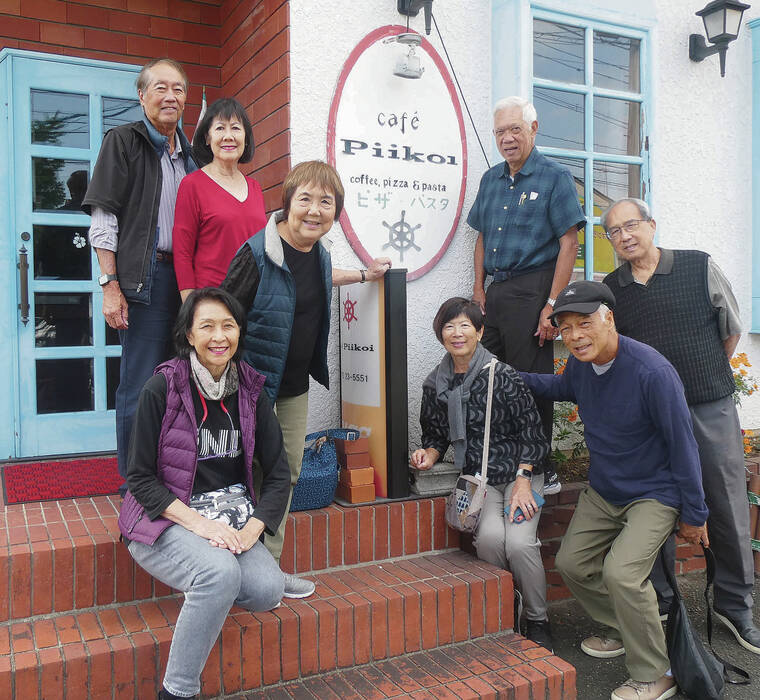Mexico’s coastal and wine regions offer culture and cuisine that will call you back again and again
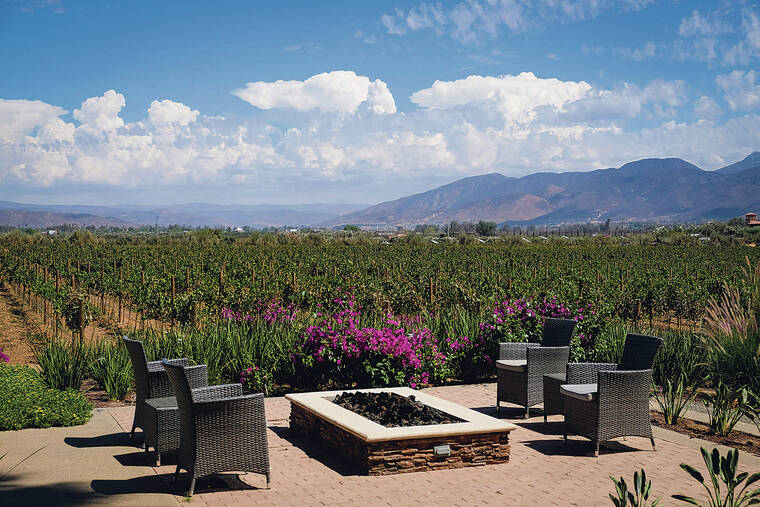
BENJAMIN MYERS / TRIBUNE NEWS SERVICE
Every villa has a fire pit overlooking the vineyards at El Cielo.
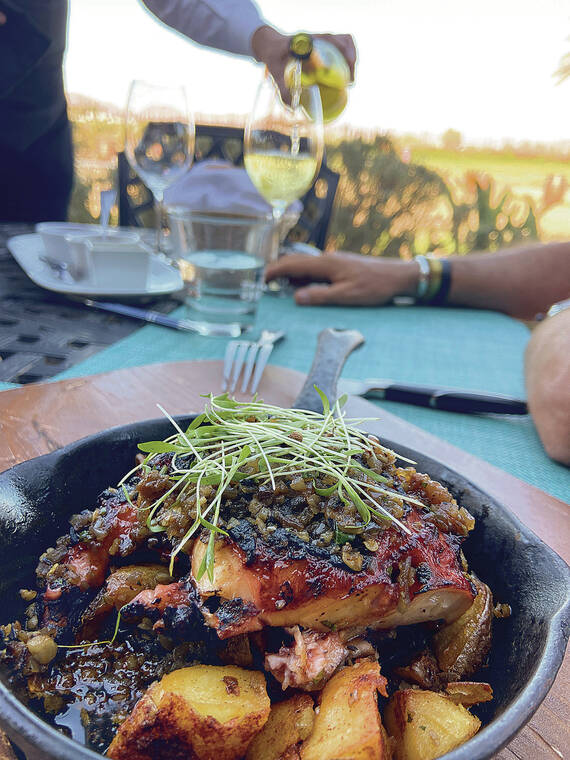
BENJAMIN MYERS / TRIBUNE NEWS SERVICE
Grilled octopus is on the menu at restaurant Latitude 32.
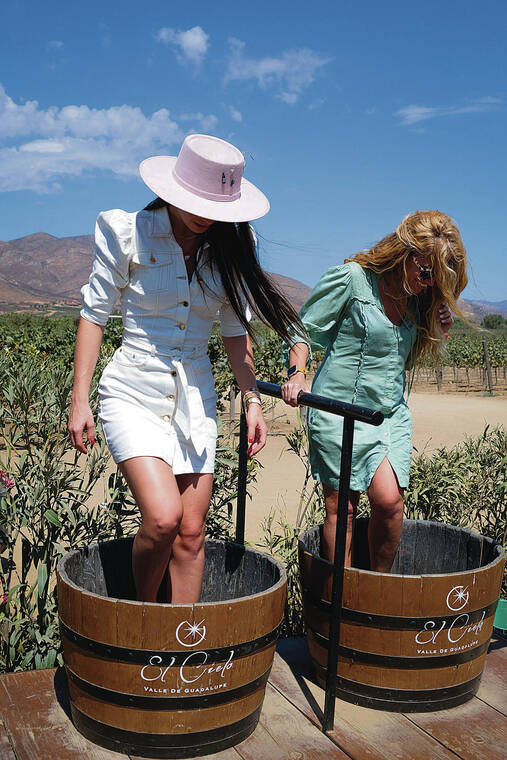
BENJAMIN MYERS / TRIBUNE NEWS SERVICE
Let your feet do the crushing during traditional grape-stomping at El Cielo.
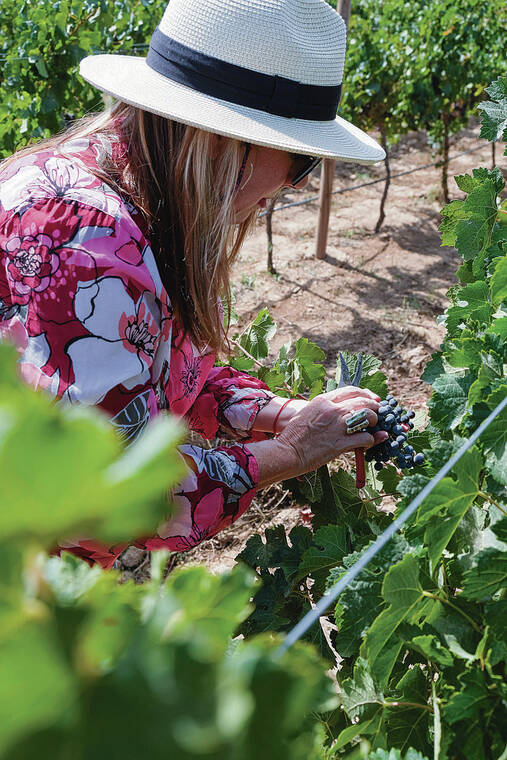
BENJAMIN MYERS / TRIBUNE NEWS SERVICE
Nearly 90% of Mexico’s wine production comes from Valle de Guadalupe.
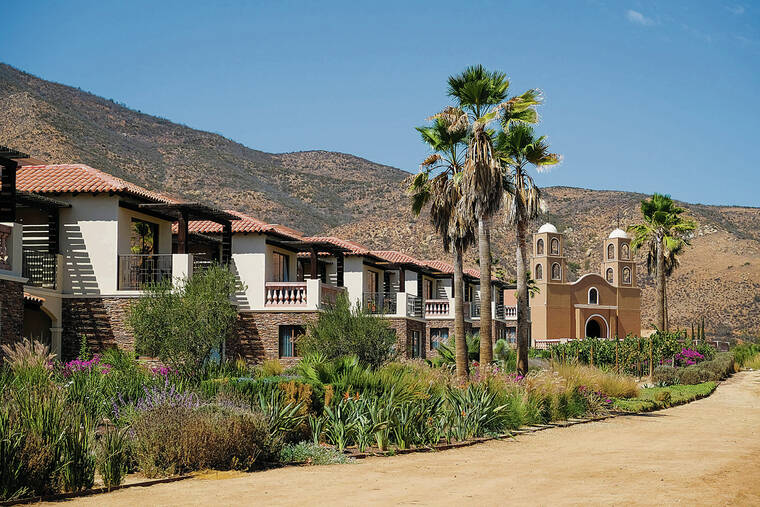
BENJAMIN MYERS / TRIBUNE NEWS SERVICE
Take a break from wine tasting during Sunday Mass at Nuestra Senora de los Milagros.





It had been 18 months since my passport had seen daylight. Travel restrictions, lockdowns and, frankly, some level of complacency were to blame for my silenced exploration. My husband, Benjamin, and I had traded in airline tickets and carry-ons for tents and fishing poles to take our pack of pooches into the wild.
Four trips to the Sequoias had us on repeat, where we settled our tribe at the base of the river. It was there that we read books aloud, smoked fresh trout, counted falling stars and bathed under cascading waterfalls. Days would pass without seeing a soul, to the point that our return to a still-isolated and masked society was slightly depressing.
Being alone — and together — felt right. I suppose we had the pandemic to thank for that. Pre-pandemic era, we were constantly on the go, traveling internationally at least once a month for both work and play. Our assignments took us to destinations as near as Costa Rica and as far as Turkey. To date, I had shaken hands with more than 85 countries, but now I was pushing my suitcase into dusty rafters instead of an overhead compartment.
Friends and family knew us as “explorers,” and many asked how we were “holding up” in the midst of global change. Ironically, we were doing just fine.
Together, we spent more time cooking, camping and enjoying life on our farm. Benjamin invested in passion projects like leather work and motorbiking, while I returned to my first love of surfing. Peppered throughout our travel hiatus were house renovations, property upgrades and research on how to better live off the land. This new normal had us soaking in the present rather than clinging to the fantasy of tomorrow.
Then, on month 18, it hit. That little itch that makes you want to cross a border. Flying … eh, not so much. The thought of lines, masks, protocols, paperwork and possibly quarantine had sent us checking weather conditions and surf reports closer to home. We didn’t need to go far, but we did crave culture — a place where we could hear another language, taste exotic foods and maybe even stand 6-feet-together with strangers.
Don't miss out on what's happening!
Stay in touch with breaking news, as it happens, conveniently in your email inbox. It's FREE!
And there it was … Mexico.
The neighboring country was nothing new to us, and in fact we’d probably visited Mexico more than 30 times. But this trip would be different. It would be our great resurgence, an awakening that had the potential to reignite our desire to explore.
We decided on a two-part vacation that would take us to the Baja Peninsula for a total of eight days. In between would be a weekend back home in San Diego. Part one would focus on surfing and relaxation near Puerto Nuevo, and part two on culture and cuisine in Valle de Guadalupe’s wine country. Both could be easily reached by car, taking us door-to-door in less than two hours.
To avoid crowds, higher prices and border waits, we would travel midweek and capitalize on one of the greatest benefits of being self-employed: freedom. Literally days before our trip, we booked a beachfront property in the gated community of Primo Tapia. For just $110 a night, our little casita had two bedrooms, a courtyard and a rooftop deck. It was here where we drank margaritas and watched the ocean swallow the sun.
It really was a magical property. Newly renovated, it had a vibrant Santa Fe style decor with everything from artwork and cookbooks giving a proper nod to Mexican culture. Within minutes of our arrival, we were greeted by “Bill,” a friendly American expat who asked us if we had come from “the dark side.”
Even before we had toured our own place, he had invited us into his, expounding on the benefits of living in Mexico where beachfront property was shockingly affordable and, above all, life was good.
We soon discovered both his claims were remarkably true. We started each morning with a surf session just out front, where waves pitched well overhead. A swell came in days before, and so we paddled our little hearts out, committing to go big or go home.
Benjamin and I took turns surfing, one catching waves while the other patrolled our pack of pups chasing seagulls, flinging kelp and biting whitewash. All four of our rescue dogs had originally come from Tijuana, but this was a side of Mexico they had never experienced. It was one of triumph over adversity, where full bellies were topped with morsels of carne asada.
Between lazy days of naps and double surf sessions, the time passed as it should — without a care in the world. The internet was down, meaning we couldn’t stream Netflix or even text. Instead, we watched the one DVD that was in the casita, Disney’s “Ice Age.” Generally, I’m not a fan of children’s films, or even Disney for that matter, but there we were, “mom and dad” next to our fur-babies sprawled out with their spindly legs, pattering tails and doggie snores.
Over dinner one night I asked Benjamin the question that our neighbor “Bill” probably had once asked his wife: “What do you think it would take to move here?” Obviously, we had no idea. So, we went straight to Bill.
When he told us a price range of $80,000 to $100,000 for something comparable to our beach lodging, I couldn’t believe it. To pour sugar on the sweet deal, he told us that property tax was nonexistent.
The next day during the drive across the border, I couldn’t take my mind off Mexico.
“What if we visited once a month? … What if we bought a place and then rented it out in between? … What if we sold our home and just moved here?”
The “what ifs” hit Benjamin left and right. Back home, we opened our computers and started house hunting “just for the fun of it.” One click after another intrigued us with the idea of starting over. What we had paid for our property in San Diego would get us a 10-bedroom coastal palace, with swimming pools and a cinema to boot.
We had it good, a life — within a land — that people on the other side of the fence would risk their own lives for. And while I never stopped thinking about that beachfront property, I settled into the idea of what it might look like if we visited our “neighbor” a little more often.
So, back into the car we went, this time to Valle de Guadalupe, 30 minutes northeast of Ensenada. From San Diego, we took the main artery of the Baja Peninsula: Highway 1. This legendary coastal road winds down from Tijuana to Los Cabos through deserts and bluffs. A faster, less scenic alternative is Highway 1D connecting Tijuana to Ensenada, and then cutting inland on Carretera 3 to Valle de Guadalupe.
Seven years earlier, we fell madly in love with “Valle,” wooed by her endless vineyards, olive groves and architectural masterpieces along the Ruta del Vino. It instantly replaced the Tijuana grit with Mexico’s finest wines, alongside country inns, luxurious haciendas, container hotels, glamping tents and romantic B&Bs. Setting down roots in the fertile land are prodigy chefs who transform old world charm into a rebellious vision gone right, with table-to-farm menus plunked right in the middle of dreamy ranches.
Balancing the mixed blessings that accompany such discoveries, many locals are fighting to keep this area from becoming the next Napa Valley. Nearly 90% of the country’s wine production comes straight from the Valle, meaning numbers are still on the rise. In 2004, there were five wineries in production; today there are more than 120. Designers, architects and hoteliers are getting in on the action with eco-properties built beside lavender and bougainvillea hillsides that add a splash of color to patchwork lands.
Despite these perks, it’s the impressive blends that keep visitor count high, and that kept us coming back for more. This time, we traveled sans dogs, passing world-class boutique wineries to celebrate the 8-year anniversary of our favorite property, El Cielo (meaning “heaven”). Considered a giant among the region’s vineyards, this winery produces 15,000 cases of wine per year and 24 labels.
During our first visit to El Cielo, we were charmed by the elegant Chardonnay, Capricornius and the Italian grape blend of Nebbiolo and Sangiovese. The Perseus, aged 24 months in French oak barrels, and the Orion — their most popular reds — are both worth emptying your luggage for.
And we did. Bottles were destined to clank all the way back to San Diego. We blame (and thank) the wine revelation on Latitude 32, El Cielo’s restaurant named for its location on the map. This upscale eatery specializes in grilled cuts like pork belly tacos and cast-iron octopus — both of which we devoured on Day One with a few glasses of wine.
That evening, we settled into our villa, at 473-square-foot suite overlooking El Cielo’s vineyards. Luxury doesn’t come cheap, however, with rates starting at $400 a night for a slice of heaven. It truly is the closest thing to a Riviera Maya resort experience without all the traffic or the all-inclusive magnitude. In their place are 33 two-story villas framing two lakes that feed a 74-acre vineyard.
One day, we drank wine, plucked and stomped grapes, held a falcon, joined a cooking class and drank more wine. It was all part of an afternoon tour that was buttoned up with a visit to the wine cellar where we made our own blend.
We still have the bottle to prove it, a dark Malbec-Sangiovese named after our fur-born, “Chucho Loco” (Spanish for “crazy mutt”). While we have yet to pop the cork, it holds a place of prominence on our wine rack as a symbol of deliverance.
For 18 months, we had blissfully confined ourselves to the complacency of our private dwelling. Somehow, two destinations just across the border had broken that paradigm within a matter of eight days, reminding us of the freedom that can come only with leaving home.

